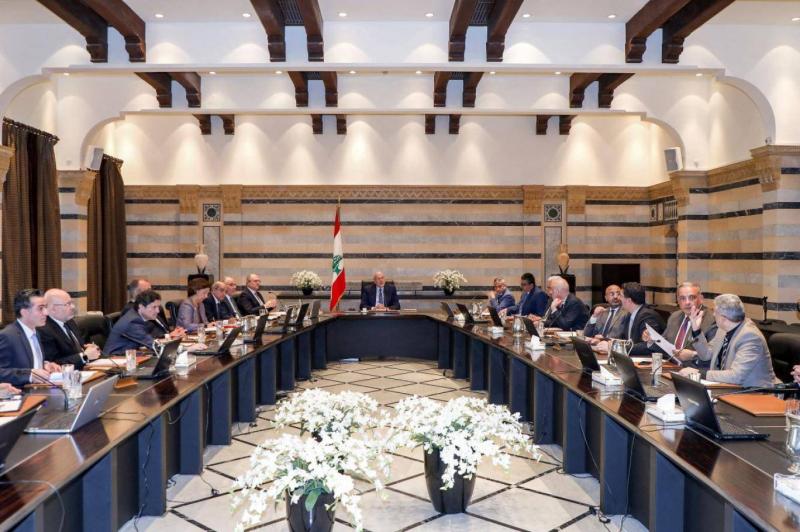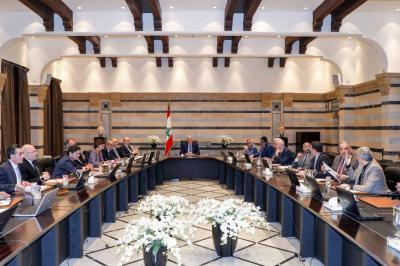The issuance of Circular 166, which grants depositors $150 monthly, is merely a patchwork attempt to revive a banking sector that has been bleeding for over four years, while authorities stand idly by watching bank after bank collapse, as if saying: "Go figure it out yourself; if you can no longer persist, withdraw from the banking market." It is supposed that the Lebanese state should acknowledge its responsibility for the losses incurred by the sector and how to recover depositors' funds, which the state still does not recognize despite existing laws for financial restructuring and restructuring the banking sector. The state is responsible for the funds that it has spent recklessly.
In precise terms, Circular 166 effectively imposes a haircut on depositors' funds, as a depositor with $100,000 in a bank would need 55 years to recover it, resulting in the depletion of that deposit over time, rendering it worthless. Financial sources familiar with the situation express astonishment at the view that what the Central Bank has achieved is the best possible outcome, emphasizing that Lebanese banks will implement Circular 166 just as they did with Circular 158, but continuing this patchwork policy without finding solutions for the banking sector is unsustainable. Continuing this hemorrhage will lead to banks that are unable to survive, subsequently exiting the banking market, especially as these banks have ceased providing loans in various forms to citizens and no longer contribute to investment activities that have dwindled amid the financial collapse, thus nullifying these banks' reason for existence.
These financial sources stress that the state has never supported banks, evidenced by what has transpired over the past four years, whether through Hassan Diab's government launching the Lazar plan aimed at completely dismantling the banks while keeping four banks operational and imposing losses upon them (a plan that ultimately failed) or through Najib Mikati's government, which initially insisted on holding banks accountable for the losses but failed to provide any solutions. Today, Deputy Prime Minister Saada Shami is presenting a draft law to the Council of Ministers aimed at securing protection for legitimate deposits, enhancing financial stability, and reactivating the banking sector to fulfill its role in financing the private sector and citizens, stimulating growth, and putting Lebanon on the path to recovery, all while considering sustainability of the public debt and ensuring the state can continue providing public services without overburdening citizens with additional tax burdens. There can be no economy without a banking sector, and no growth without a private sector.
The draft also aims to mitigate systemic risks related to the banking sector as a whole and to reduce reliance on a cash-based economy, which, if it persists, would severely harm Lebanon and its relationships with correspondent banks and global financial institutions. It is noteworthy that the Association of Banks has proposed several plans regarding deposits, including that the government acknowledges part of its responsibility for these losses. Shami himself previously presented a government-sponsored draft law for financial balancing and restructuring the banking sector, which is still sitting in parliament. Therefore, there is fear that this new project may languish should objections arise, particularly from the Association of Banks.
These sources consider that the logical solution to the deposit crisis is to establish a fund for recovering deposits and managing state assets without selling or leasing them, or we will remain without a solution for this dilemma for years to come.
In any case, banks today find themselves in a puzzling situation as they implement Circular 166 by providing depositors with $150 monthly while simultaneously continuing to apply the bank dollar at 15,000 LBP, while all purchases, taxes, and fees are assessed at the actual rate of 89,500 LBP. This disparity perpetuates the inequity faced by depositors, especially as their balances, and the balance of the Central Bank, are also based on the actual rate. Should the Central Bank insist on this rate, banks will collapse and exit the banking market. Consequently, during a meeting with caretaker Prime Minister Najib Mikati, they demanded that his government determine a new bank dollar price. However, the government preferred to wait and defer the decision, passing the responsibility back to the Central Bank, with banks indicating that they await a decision on adjusting the bank dollar exchange rate, regardless of the source (government or Central Bank). Until that time, the 15,000 LBP rate will remain applied, with the responsibility bouncing among the government, parliament, and the Central Bank as to who will establish the bank dollar price, knowing that Prime Minister Mikati is hesitating to make a decision regarding the bank dollar price determination, directing banks to continue dealing with depositors at the exchange rate of 15,000 LBP until consultations with relevant parties are completed.
But the question that officials avoid answering, according to the chief economist at Byblos Bank, Nassib Ghobril, is: what will happen to the deposits, how will they be recovered, and within what timeframe? Depositors are awaiting answers to these questions from legislative, executive, and monetary authorities, as well as from the banking sector, to understand the fate of their deposits.




